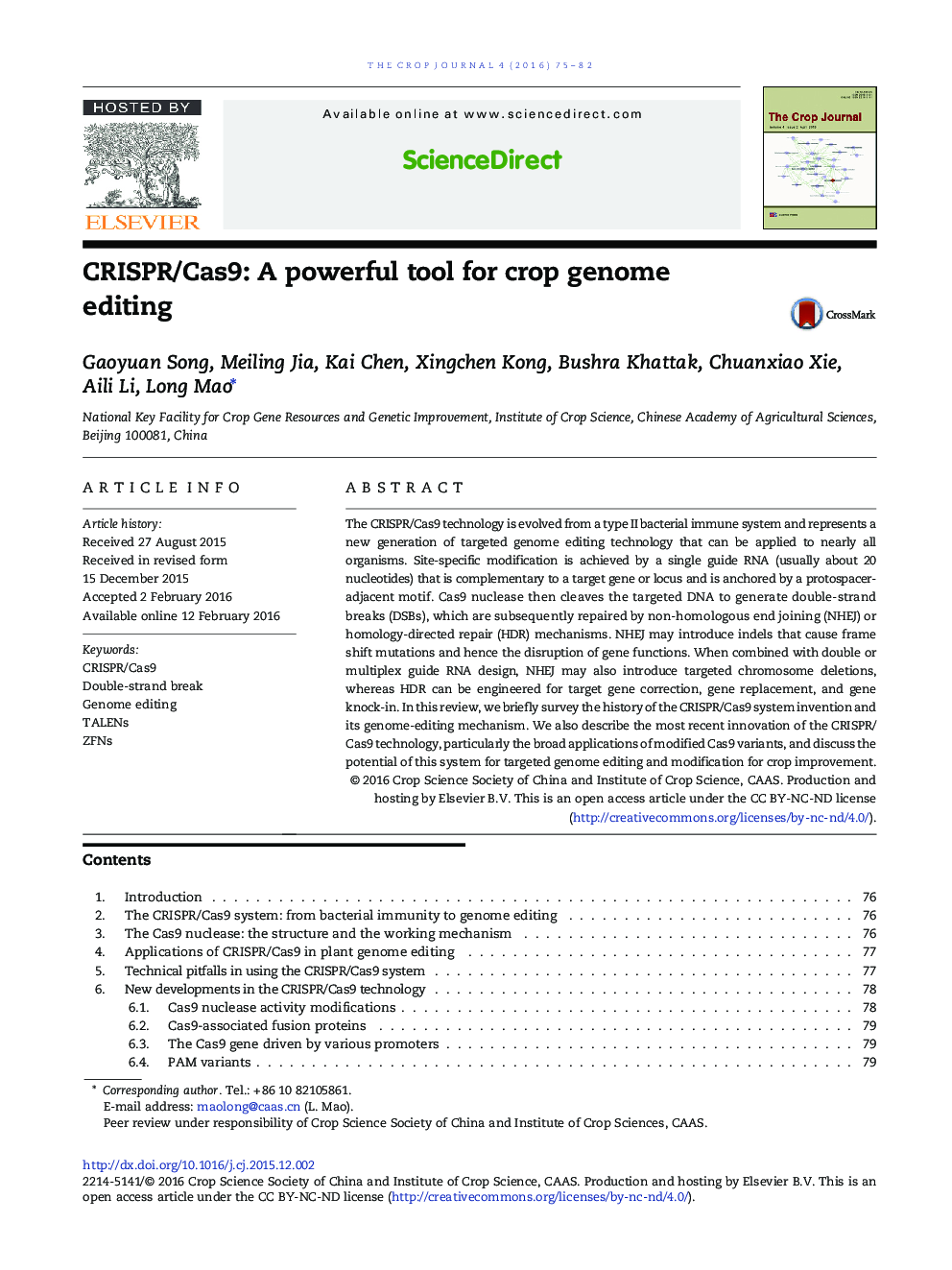| Article ID | Journal | Published Year | Pages | File Type |
|---|---|---|---|---|
| 2079424 | The Crop Journal | 2016 | 8 Pages |
The CRISPR/Cas9 technology is evolved from a type II bacterial immune system and represents a new generation of targeted genome editing technology that can be applied to nearly all organisms. Site-specific modification is achieved by a single guide RNA (usually about 20 nucleotides) that is complementary to a target gene or locus and is anchored by a protospacer-adjacent motif. Cas9 nuclease then cleaves the targeted DNA to generate double-strand breaks (DSBs), which are subsequently repaired by non-homologous end joining (NHEJ) or homology-directed repair (HDR) mechanisms. NHEJ may introduce indels that cause frame shift mutations and hence the disruption of gene functions. When combined with double or multiplex guide RNA design, NHEJ may also introduce targeted chromosome deletions, whereas HDR can be engineered for target gene correction, gene replacement, and gene knock-in. In this review, we briefly survey the history of the CRISPR/Cas9 system invention and its genome-editing mechanism. We also describe the most recent innovation of the CRISPR/Cas9 technology, particularly the broad applications of modified Cas9 variants, and discuss the potential of this system for targeted genome editing and modification for crop improvement.
